On a recent visit to MB&F’s very interesting M.A.D. Gallery in Geneva, I found myself fascinated by the sight of some unusual creatures. Even though they are not animated and don’t breathe, they seemed to me like nothing less than that: real creatures.
The M.A.D. Gallery is always interesting and perennially worth a visit, but not very often do I find myself quite this mesmerized – like seeing something out of the corner of your eye and not being able to look away.
The creatures, which belong to the M.A.D. Gallery’s first themed exhibition, are fascinating in that they mimic life, but comprise mechanical gearing. Sound a bit familiar? It should: the balance of a watch movement is often described as the timepiece’s beating heart.
To drive the point home, as Ian and I walked through the exhibition, ogling the detailed view of the static creatures – they are not conceived to move, but rather to act as sculptures symbolizing life, human ingenuity, ethical questions, and the art of craftsmanship – one of them actually did begin to move.
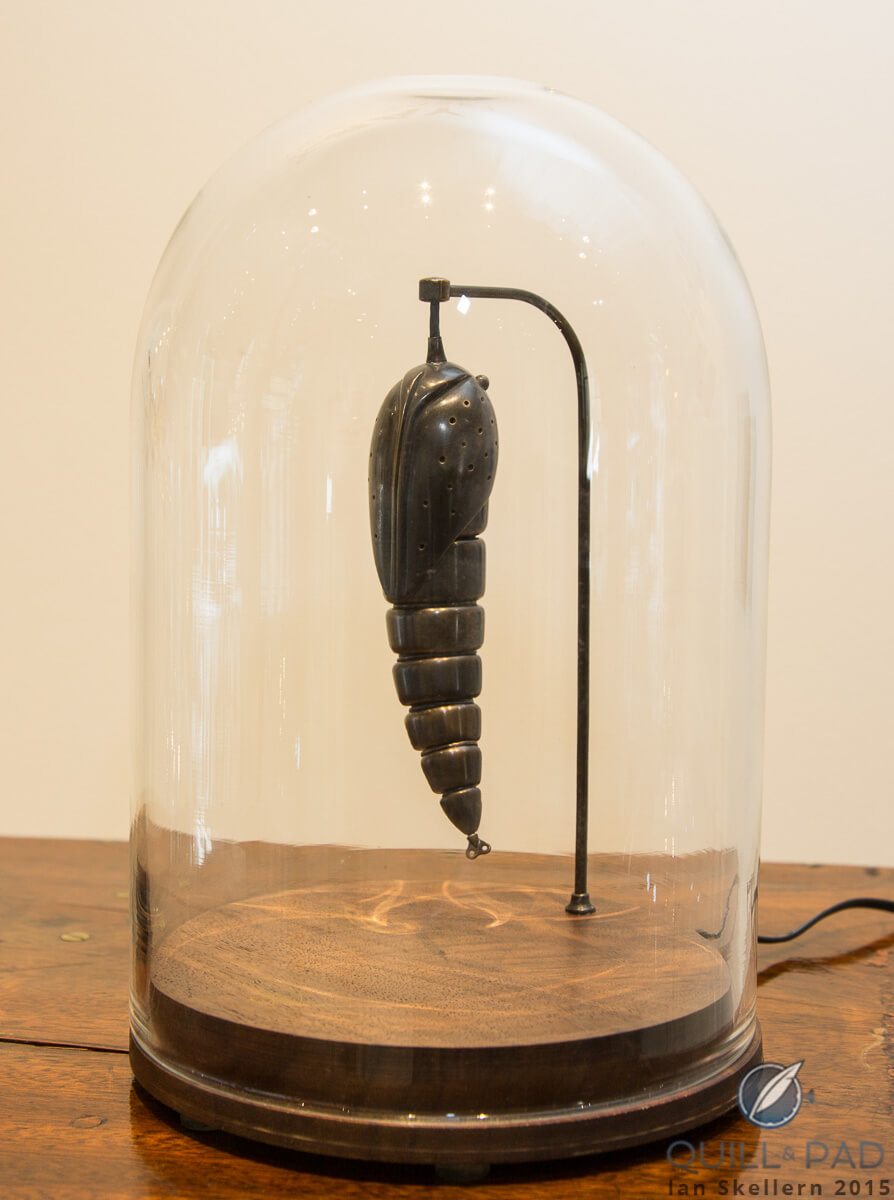
Pupa by Paul Swan Topen at the MB&F M.A.D. Gallery: every now and then the articulated “tail” curls in a slightly unnerving manner
It first startled, then slightly horrified and enthralled us.
The creature in question is a cast bronze pupa. Residing underneath a bell-style glass dome, it hangs. It must be outfitted with a sensor or timer of some sort because as soon as you get near it, it gently (and creepily) moves, emulating life. Fascinating in horrific sort of way.
The pupa was created by Paul Swan Topen, a Scottish-born artist with a great affinity for vintage clocks and engineering. Topen has created fashion accessories, showpieces, and artistic elements for fashion designers and brands such as Issey Miyake, Stephen Jones, and even Hermès.
He also loves butterflies, so his more “standard” artwork tends to combine the two topics. His “clockwork” butterflies, whose intricate brass bodies are created on a traditional watchmaker’s lathe, juxtapose the beautiful wings of a fallen creature with mechanical components from antique clocks or pocket watches. Though they really look as if they could fly, they are “just” sculptures.
Interestingly, butterflies do come about in horology now and then. Aside from vintage devices such as butterfly keys and butterfly escapements, independent watchmaker and AHCI member Andreas Strehler is known for his butterfly-shaped Papillon bridges. The butterfly is also a recurring theme at Jaquet Droz ever since one of Pierre Jaquet-Droz’s famous androids – the Draughtsman – was programmed to draw a scene involving Cupid driving a chariot pulled by a butterfly.
The M.A.D. Gallery has eight of Topen’s works in stock, two of which are animated – aside from the pupa, the key-tailed prepona butterfly also moves.
Quick Facts Bronze Pupa
Artist: Paul Swan Topen
Cage: glass dome
Size: 22 cm high, 14.5 cm diameter
Limitation: unique piece
Price: 4,400 Swiss francs
MeCre by Gaby Wormann
Gaby Wormann is an established artist whose work basically revolves around the theme of ethics and uninhibited intervention in biological systems. Perhaps this is why I was immediately drawn to her pieces first (despite beginning this particular story by describing the subtly creepy pupa).
Inspired by Franz Kafka and other artists, her MeCre (Mechanical Creatures) begin with the organic, prepared bodies of real insects. To these she adds tiny horological components (that are nonetheless non-functional), making exoskeletons of them. The resulting “bionic” insects do look eerily real. Luckily they don’t have super-powered limbs like the Bionic Man.
My favorite of Wormann’s pieces on display at the gallery, perhaps because of its less bug-like elegance, is the Tropidacris Dux, a Giant Brown Cricket with elegant, mainspring-enhanced antennae. Its wings make it look less like a cricket and more like a masculine butterfly in my opinion.
The M.A.D. Gallery has nine of Wormann’s works in stock; each one is sure to make you think. If it’s not busy giving you a fright, that is.
Quick Facts Tropidacris Dux
Artist: Gaby Wormann
Cage: solid Wenge wood frame
Size: 34 x 28 x 8 cm
Limitation: unique piece
Price: 4,200 Swiss francs
Christopher Conte’s Duellona
Unlike the previous two artists I describe here, American-Norwegian artist Christopher Conte doesn’t begin with organic creatures to create his Duellona insect sculptures. No, these are cast bronze and comprise articulated legs, hooked antennae, and a riveted exoskeleton encasing a genuine watch movement – which symbolizes the inner workings of living creatures.
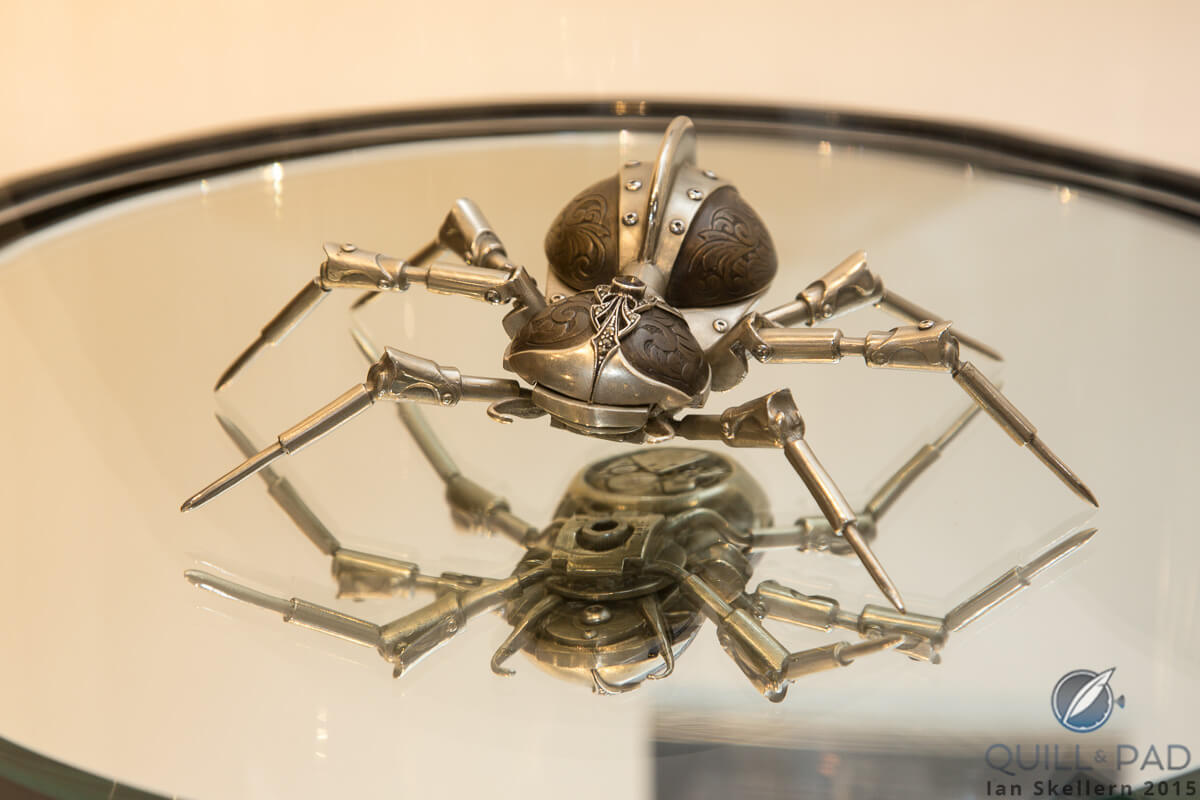
A spider-like unique piece sculpture from Christopher Conte’s Duellona collection at MB&F’s M.A.D. Gallery
More than slightly steampunk, the Duellona insects are detailed and beautifully hand-engraved. Thus, each one takes months to complete. Conte, a certified prosthetist, is inspired to his art by his love of biomechanics, anatomy, and robotics.
The M.A.D. Gallery has three different versions of Conte’s works in stock: white bronze or yellow bronze (both available in a limited edition of 10 numbered pieces) and a unique piece in patina-rich bronze with red garnet gemstone.
Quick Facts Duellona
Artist: Christopher Conte
Material: bronze with red garnet gemstone
Cage: none, but best kept on a mirror so that you can see the watch movement visible from the belly of the creature
Size: 15 x 12 x 4 cm
Limitation: unique piece
Price: 3,900 Swiss francs
For a full list of the MB&F M.A.D.Gallery’s Mechanical Entomology collection and prices, please click Mechanical Entomology and/or Mechanical Entomologyy pricelist.pdf.

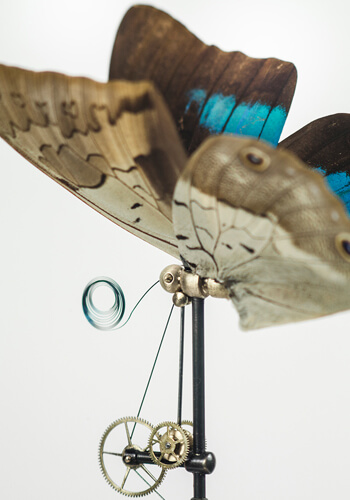
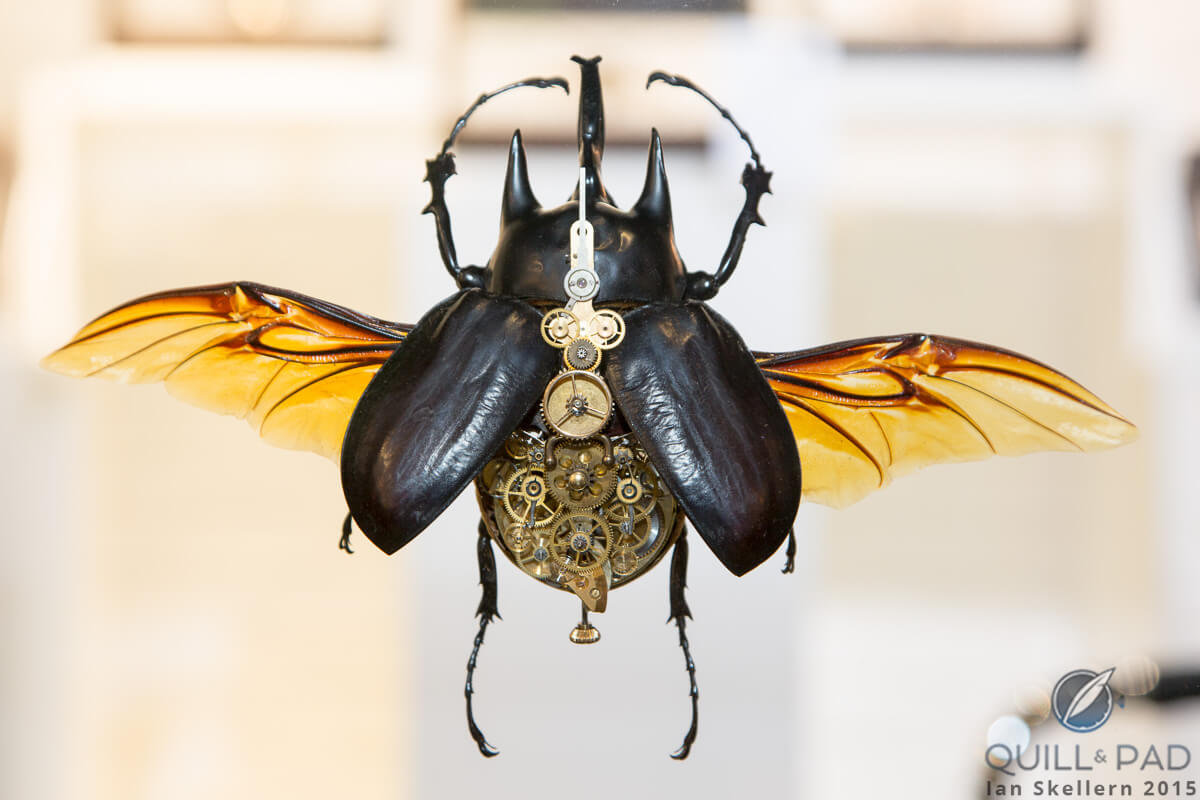
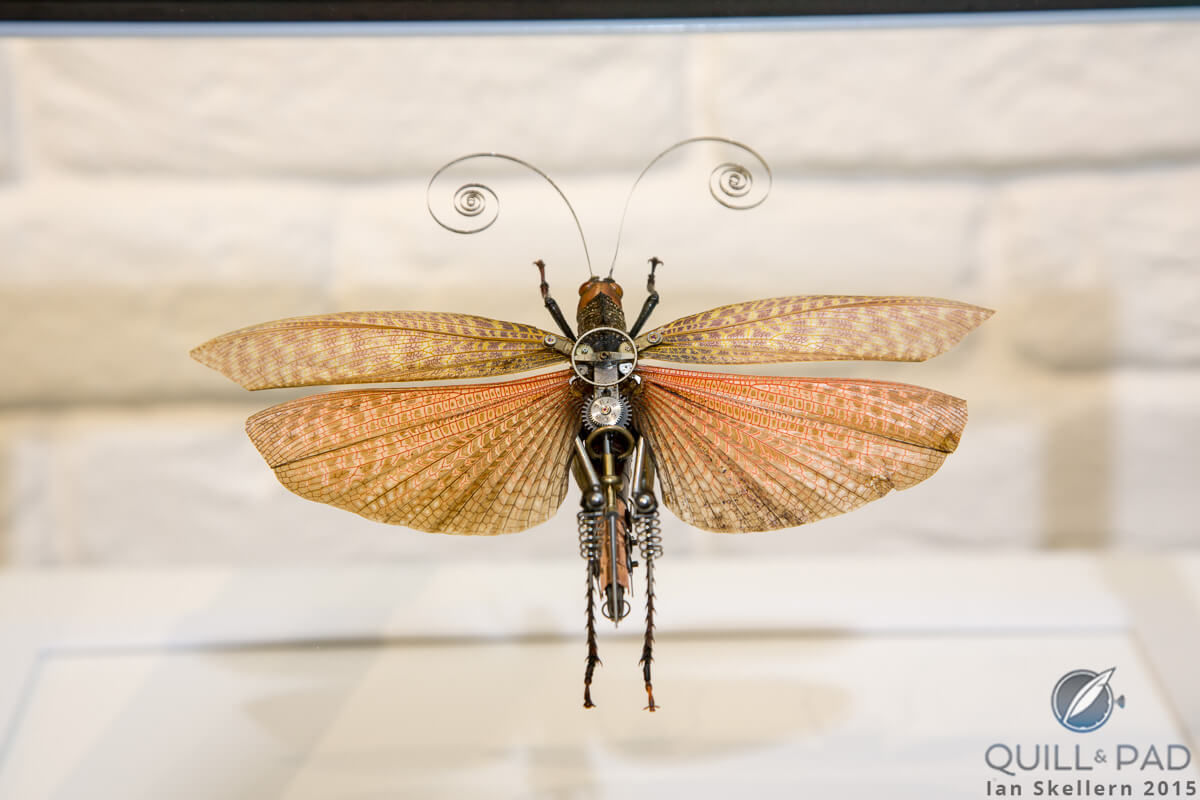
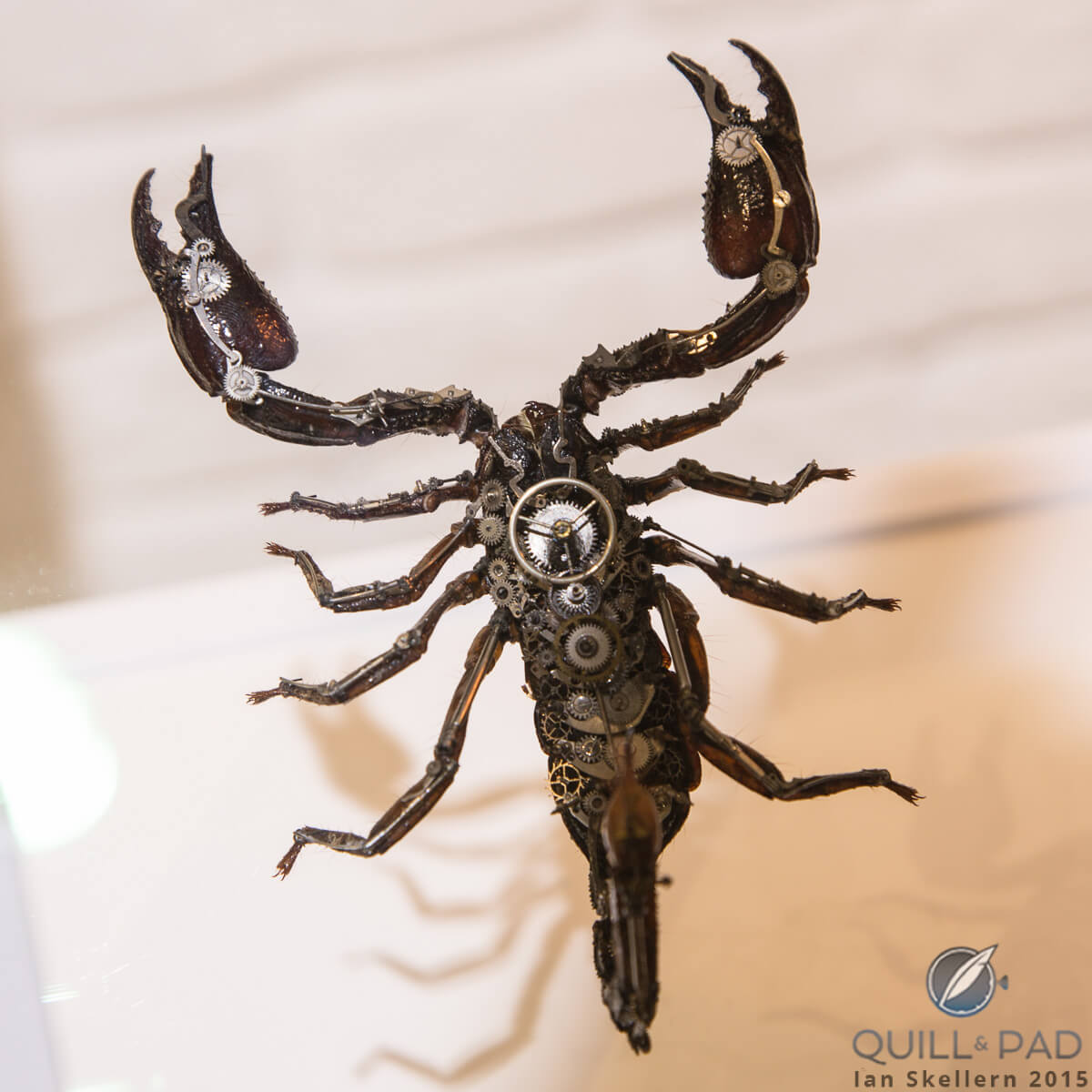
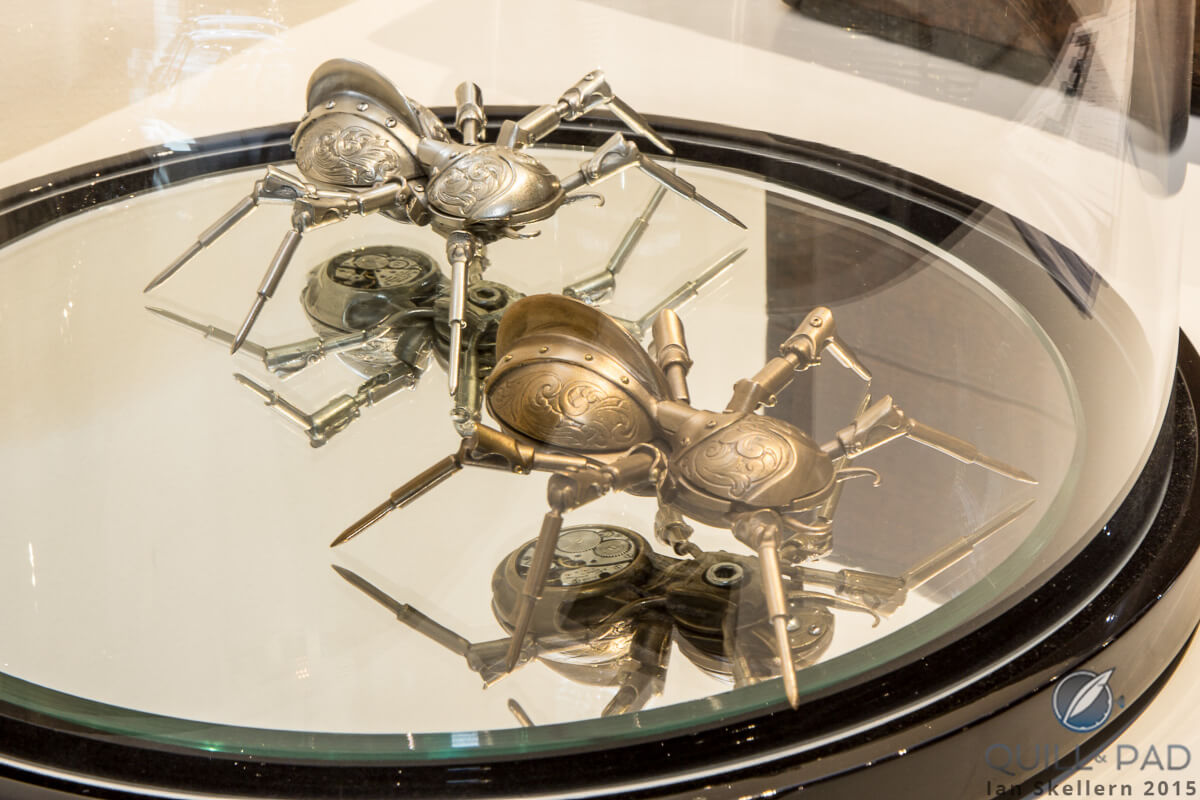
Leave a Reply
Want to join the discussion?Feel free to contribute!